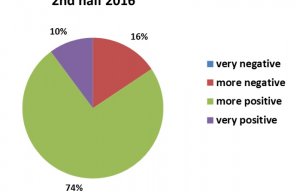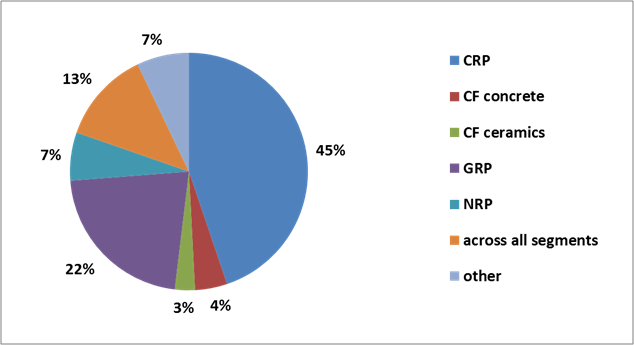
Composites Germany survey reveals positive industry outlook
The fourth survey shows that the current economic situation in the composite market is seen as mostly positive and investment friendly.

14th January 2015
Innovation in Textiles
|
Frankfurt
Fibre-reinforced plastics/composites are offering great development potential in a wide range of applications, ranging from automotive industry and construction to aviation and electronics, due to their versatility, according to the trade association Composites Germany.
Since 2013, Composites Germany has been gathering indicators on current and future developments in composites, based on a six-monthly member survey conducted by leading composite industry associations AVK, CFK Valley, CCeV and VDMA.
The fourth survey shows that the current economic situation in the composite market is seen as positive and investment friendly, offering some great development opportunities in the near future, especially in automotive and aviation industries.
Following trends in previous surveys, the current economic situation is seen as positive by the respondents. However, whereas in the last survey nearly 90% viewed the economic situation as quite positive or very positive, this share has gone down to just over two thirds of all respondents.

The downturn was to be expected after the very high level in previous surveys. Once again, the situation is seen as particularly critical in Europe, whereas it is generally rated as better for Germany and on a global scale.
Assessments of the future economic situation are continuing to be positive. About 90% of respondents believe that the economic situation will be the same or even better in the relevant regions (i.e. Germany, Europe and worldwide) over the next six months (pic. 1).
The positive assessment of the general economic situation and the good future prospects are underpinned by several further factors. Nearly 30% of respondents are planning to recruit new staff in 2015, compared with only 10%, who are planning to downsize their workforce.

An equally good picture emerges for planned investments, as nearly two third of respondents are hoping to make investments this year.
Likewise, a strong commitment to the composites market continues to be seen as worthwhile. Nearly half of all correspondents say they are hoping to step up their commitment to composites (pic. 2).
As before, the main impetus for growth in this survey is believed to come from CFP (carbon-fibre reinforced plastics). When asked, which future growth drivers they perceived on the material side, nearly half of all respondents specified CFP (pic. 3). The regional drivers in this segment are seen to be Germany and Asia.

For the first time the survey also covered the respondents’ assessment concerning future developments in different areas of application. The automotive and aviation industries are apparently expected by the composites industry to display the most positive development, followed by wind energy.
Both the general economic situation and the companies’ own business situations are seen by respondents as somewhat more negative than in previous surveys (pic. 4). However, levels were extremely high in previous surveys.

At the same time, despite this slight downturn, the assessment of the economic situation generally continues to be positive (see above).
The next issue of the Composites Market Survey will be published in July 2015.

Business intelligence for the fibre, textiles and apparel industries: technologies, innovations, markets, investments, trade policy, sourcing, strategy...
Find out more